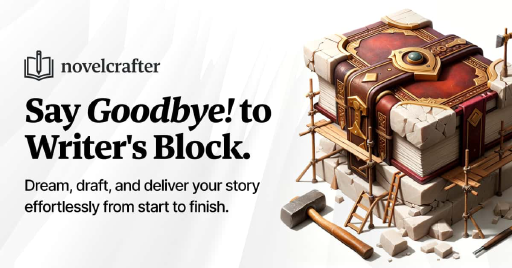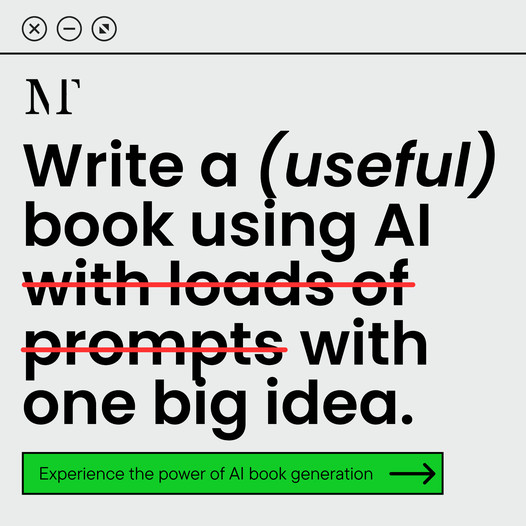Importance of Outlining Your Story
Getting your story straight is like making a map before setting off on a road trip. You don’t want to end up lost between Plot Twist Avenue and Boring Boulevard, right? Putting your ideas in order is a game-changer. Not only does it help keep your story moving smoothly, it makes the whole storytelling gig a lot easier. Let’s chat about two big reasons why outlining rocks: keeping your timeline solid and steering your plot in the right direction.
Consistency in Timeline
Ever notice how confusing things get when characters seem to time travel all over the place? An outline is your secret weapon against that chaos. It’s like your story’s personal GPS, making sure you don’t have any of those “Wait, when did he get here?” moments. With everything laid out in front of you, it’s a cinch to track when and where everything happens, keeping the whole story logical and easy for readers to follow.
| Timeline Thingamajig | Why It Matters |
|---|---|
| Events in Order | Keeps stuff happening in the right order |
| Chrono Consistency | Nixes any storyline contradictions |
| Time Jumps | Stops jarring reader whiplash with sudden leaps |
Guiding Plot Structure
Think of an outline as your plot’s best friend. It’s the nudge you need to keep the story moving, building up the suspense, and making sure nothing derails into a yawning gap. Your outlined plot serves up a path from start to finish, helping snap together the rising action, pinpointing that killer climax, and wrapping everything up properly.
| Plot Element | What’s the Deal? |
|---|---|
| Set-Up | Say hey to characters and scene |
| Build-up | Cranks up the tension; sets up the clashes |
| Big Moment | Where stuff hits the fan |
| Falling Action | Tidy up those plot threads |
| End Game | Bring the curtains down on the story |
Having an outline is like giving your story a skeleton; it shapes the narrative but gives you the freedom to get creative with the details. As you write, peep at your outline to make sure everything’s progressing in a way that’ll keep folks flipping those pages. Want more tricks up your sleeve for mapping out your masterpiece? Check out our guide on how to plan your book.
Benefits of Using an Outline
Crafting an outline isn’t just about having a plan – it’s a tool that can change the way you write, from giving life to your characters to saving you tons of time. Get hip to these benefits, and you’ll see why outlining might become your new writing buddy.
Character Development
Outlining your story keeps you on your toes about how your characters grow and change. It’s like the secret sauce to keeping your characters real, relatable, and unforgettable. By sketching out how they respond and grow in various situations, you breathe life into them (Good Story Company). This consistency weaves a tale where your readers see your characters blossom and root for them every step of the way.
| Character Juicy Perks | Breakdown |
|---|---|
| Crystal Clear Character Path | See how your characters develop as the story unfolds. |
| No Flaky Characters | Stick to their vibe and traits. |
| Heartfelt Stories | Craft characters that make your readers feel all the feels. |
Tracking Emotions
Your outline is like a backstage pass to your character’s emotional world. As you draft every scene, think about what emotional note your characters are hitting. Jotting these feelings down amps up your story, making every scene pack an emotional punch (Good Story Company). Understanding your characters’ emotions isn’t just about being authentic – it makes your story resonate deeper with readers.
| Emotional Insights | Breakdown |
|---|---|
| Scene With Soul | Add emotional depth to scenes. |
| Connect the Dots | Develop a bond between readers and characters. |
| Emotional Harmony | Ensure emotions and the plot sync up smoothly. |
Time Efficiency
Outlining is a writer’s domestic superpower – it pumps up your writing speed and chops down time lost wandering in your thoughts. Folks who outline often wrap up their tales quicker without losing sight of the plot. It’s like having a GPS for your writing, helping you avoid getting stuck in writer’s block quicksand and keeping the creative juices flowing (Good Story Company).
| Time-Saving Smarty Points | Breakdown |
|---|---|
| Speed Racer Drafting | Cut down that timeline to finish your masterpiece. |
| Laser-Focused Writing | Keep your goals in your sights. |
| Block Buster | Bust through creative blocks with ease. |
Once you see the wonders of outlining, you’re on your way to sprucing up your writing game and nailing that final draft. Check out our other brainstorms on how to write better stories and tips for writing a novel.
Various Outlining Methods
Figuring out how to outline a story can feel like trying to find the perfect pair of jeans—not every style fits every person. So, here are three tried-and-true outlining tactics to consider: the Synopsis Outline, In-Depth Outline, and Snowflake Method.
 What Poetry Feels Like
What Poetry Feels LikeSynopsis Outline
The Synopsis Outline is like getting the 411 on your story in a quick read. It’s all about putting together a one or two-page rundown that hits all the main points of your tale without getting bogged down by nitty-gritty details. It’s a happy medium, giving your plot some bones while letting you jazz it up as you progress. Perfect for those who like to let their creative juices flow freely while keeping the story arc in sight.
| Advantage | Disadvantage |
|---|---|
| Offers a clear path | May miss out on finer details |
| Leaves room for creativity | Might be too vague for some |
Want to keep things crystal clear while outlining? Have a peek at our beginner writing tips.
In-Depth Outline
If flying by the seat of your pants ain’t your thing, the In-Depth Outline might be your go-to. This one’s all about breaking your book into chapters or scenes, laying it all out like a buffet table. A detailed plan can help you churn out that first draft faster since you’ve got a guide leading you through your narrative’s twists and turns. It’s like having a GPS for your story—no wrong turns here!
| Advantage | Disadvantage |
|---|---|
| Provides a detailed pathway | Might box you in |
| Keeps the pace steady | Takes some serious planning |
For tips on speeding up your writing, check out our guides on how to write better stories.
Snowflake Method
The Snowflake Method is a fan-favorite, especially for those who love building their stories one snowflake at a time. Invented by Randy Ingermanson, it starts with a simple idea, then slowly piles on the layers, diving into characters, spots, and themes in all their glory. It’s a goldmine for developing rich, complicated narratives with standout heroes and killer plots.
| Advantage | Disadvantage |
|---|---|
| Deepens character and theme | Takes some time to build |
| Makes big ideas digestible | Can be a bit much for rookies |
Curious about crafting characters in your outlines? Check out our thoughts on how to create realistic characters.
Each of these outlining styles has its pros and cons. Mixing and matching can be like trying on hats until you find the one that suits your writing style and helps you tell your tale without losing your way.
Elements of a Story Outline
Kicking off a tale with a solid outline is like plotting a road trip. You want to make sure you don’t end up lost in the middle of nowhere, running low on gas. Here, we’ll zoom in on two big pieces of mapping out a tale: nailing down that snazzy story premise and filling in our cast of characters.
Story Premise
Getting your story premise right is like hitting the bullseye with a dart—it’s gotta be sharp. This little gem, wrapped up in just a couple of sentences, should spill the beans on your story by highlighting the hero, setting, drama, and all the juicy bits that reel in the readers. When you capture this magic, you’ve got yourself a nifty compass to steer your plot and keep it sailing smoothly (Writers.com).
| Feature | What’s It Do? |
|---|---|
| Protagonist | Who’s the big cheese, and what’s ticking under their hat? |
| Setting | Paint a picture of where and when the magic happens. |
| Conflict | Lay out the heart-thumping showdown that’s front and center. |
| Interesting Aspects | Show off quirks or thrills that make your tale pop like fireworks. |
Crafting a rock-solid outline is like viewing the playing field from a blimp—you see all the angles and jumps ahead (Edraw Mind).
Fleshing Out Characters
Think of your characters as puzzle pieces that need their own intricacies. By diving into each character’s quirks, past traumas (hey, who doesn’t love some skeletons in the closet?), and their projected storyline, your readers will latch onto them like a kid on candy. Here’s what to keep in mind:
| Character Aspect | Gimme the Details |
|---|---|
| Name | What do they go by on their birth certificate and the streets? |
| Role | What part do they play? Are they the Batman or the Joker? |
| Backstory | What makes them tick? What shadows lurk from their past? |
| Goals and Motivations | What’s their drive? Why do they get up in the morning? |
| Relationships | Who’s their kin, their arch-nemesis, or secret crush? |
A carefully thought-out outline strings your people and particulars like a tightrope, prepping you for the balancing act of spinning a yarn that grips readers’ hearts (Edraw Mind). By diving into fleshing out characters, you’re crafting lifelike tales bursting with charm and honesty.
Got a thirst for more on making your characters leap from the page? Dive into our handy tips on creating realistic characters. Or, if you fancy sharpening up those writing chops, take a peek at how to improve writing skills.
Approaches to Writing Outlines
So, you’re staring at a blank page, and the story ideas are swirling around like a tornado. Where do you even start? Writing an outline can be your lifesaver. It’s like a roadmap for your writing journey—keeping you on track when your plot threatens to veer off into the wild blue yonder. Let’s zoom in on three popular ways to outline your tale:
Plot-Based Approach
Think of this like laying down the train tracks for your story to race along. With the plot-based style, you’re zeroing in on the big moments—like setting off the fireworks for the story. It’s all about marking those major mile markers: the juicy bits where your character gets their marching orders, the turning point where all heck breaks loose, and the wrapping up where everything magically sorts itself out.
| Plot Point | Description |
|---|---|
| Inciting Incident | The drama that kicks off the fun, throwing your hero into the fray. |
| Mid-Story Events | The grit and grind that cranks up the suspense-o-meter and fleshes out your folks. |
| Climax | The jaw-dropper of the story; this is do-or-die time for your lead act. |
| Resolution | Tying up loose ends like a pro and giving readers something nice to chew on. |
This method is a lifesaver for getting your story’s ducks in a row and making sure your plot rolls like clockwork. If you’re itching for more on plot magic, peek into how to create a compelling plot.
Scene-Based Approach
Think of this as being the director of your own movie—every scene is a mini-movie moment. You’re detailing each scene like you’re writing your own play script: capturing the nitty-gritty of who says what, where they’re standing, and every emotional zinger.
What to note in each scene:
| Scene Element | Description |
|---|---|
| Scene Purpose | Why this moment matters in the big picture or to your folks. |
| Setting | The where and when, because every scene needs its own backdrop. |
| Character Actions | What your peeps are up to and how they’re playing off each other. |
| Emotional Tone | The feels of the scene—what’s the vibe? |
This approach works wonders if you’re all about crafting vivid scenes that pop. For more writing tunes, swing by our stash of beginner writing tips.
Themes-Based Approach
This is your soapbox moment—what do you really want to say with this masterpiece? Center your outline around the heartbeats of your story, the big ideas and themes. It’s where you’re laying out what messages you’re hand delivering to your readers.
Here’s what to jot down for themes:
| Theme Element | Description |
|---|---|
| Core Themes | The big ideas that’ll weave through your tale (think love, loss, soul-searching). |
| Character Arcs | How your characters grow, echoing those themes as they stumble along. |
| Symbolism | Those sneaky symbols that pack a punch of deeper meaning. |
Letting the themes steer your story means you’re handing your readers a message that hits home. Get those creative juices flowing with our creative writing exercises.
Whichever path you pick to form your outline, you’re giving your storytelling some serious structure. Each of these tricks has its charm, so find what clicks with your rhythm and let the words flow.
Overcoming Outlining Challenges
Getting an outline together might throw some curveballs your way, messing with your writing mojo. But hey, a little proactive work can keep you marching on with your story. Let’s see how to fix plot hiccups and juggle those fresh ideas while outlining.
Squashing Plot Holes
Plot holes are like potholes—they can throw your story off balance and make readers grumble. To keep your narrative smooth, give your outline a good once-over every now and then. Here’s how to keep plot holes from ruining your story drive:
-
Track Key Events: Keep tabs on your main plot twists and turns. Make sure they’re connecting like pieces in a chain.
-
Character Motivations: Make sure your characters’ moves make sense with their backgrounds and goals. When characters stay true to themselves, plots stay on course.
-
Seek Feedback: Got trusty pals or a writer’s gang? Get them to comb through your outline in case you missed a thing or two.
Managing Fresh Ideas
When you’re knee-deep in drafting, new ideas can pop up like mushrooms after rain. But keeping those brainstorms in line is crucial for your story’s rhythm. Here’s how to manage new ideas without losing your groove:
-
Be Open-Minded: Don’t lock your outline in stone. Roll with fresh ideas that could jazz up your story.
-
Set Clear Goals: Before each writing jam, know which part of the outline you’re gonna beef up. This keeps you from making big changes that might trip up your tale.
-
Visual Tools: Bust out storyboards or draw it out—some folks think better with pictures. It makes slotting new ideas into your story easier.
Keeping an eye on plot holes and minding new ideas will help craft an outline that’s a solid springboard for writing. Want more help? Take a peek at our beginner writing tips and how to write better stories.

 Grab my poetry book, 'we're all just wanderers in the end' Here
Grab my poetry book, 'we're all just wanderers in the end' Here AD: Your Book Finally Written...
AD: Your Book Finally Written...